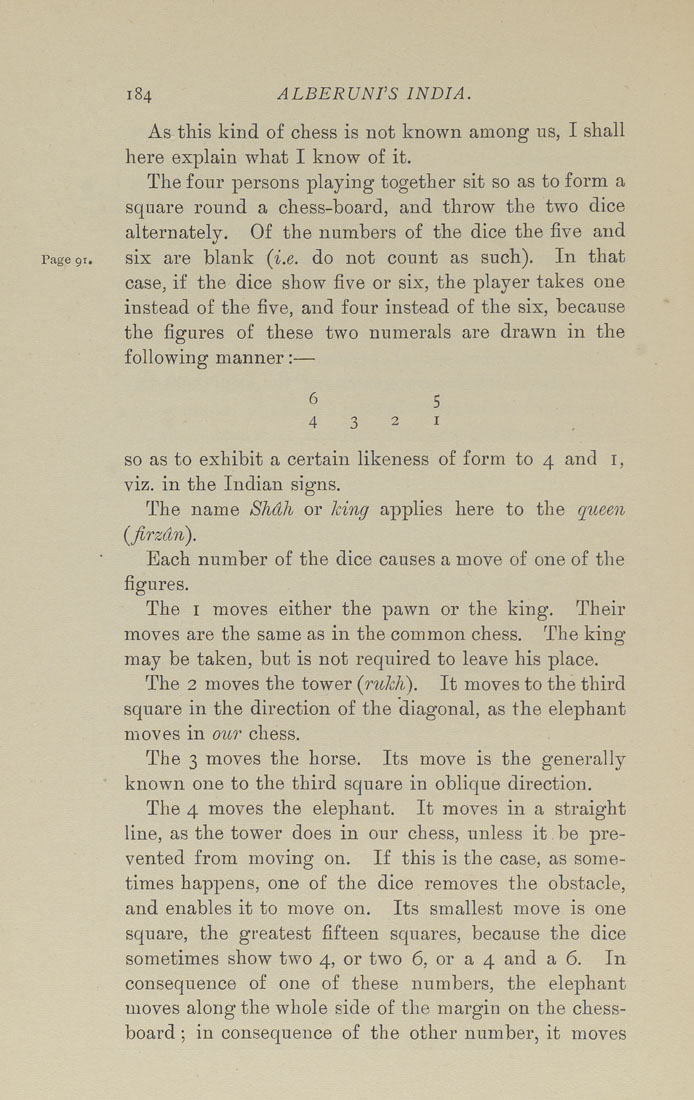Bīrūnī, Muḥammad ibn Aḥmad, Alberuni's India (v. 1)
(London : Kegan Paul, Trench, Trübner & Co., 1910.)
|
||
|
|
|
|
| Page 184 |

184 ALBERUNPS INDIA. As this kind of chess is not known among us, I shall here explain what I know of it. The four persons playing together sit so as to form a square round a chess-board, and throw the two dice alternately. Of the numbers of the dice the five and p.agegi. six are blank (i.e. do not count as such). In that case, if the dice show five or six, the player takes one instead of the five, and four instead of the six, because the figures of these two numerals are drawn in the following manner:— 6 5 4321 so as to exhibit a certain likeness of form to 4 and i, viz. in the Indian signs. The name Shdh or king applies here to the queen (firzdn). Each number of the dice causes a move of one of the figures. The I moves either the pawn or the king. Their moves are the same as in the common chess. The king may be taken, but is not required to leave his place. The 2 moves the tower (rukh). It moves to the third square in the direction of the diagonal, as the elephant moves in our chess. The 3 moves the horse. Its move is the generally known one to the third square in oblique direction. The 4 moves the elephant. It moves in a straight line, as the tower does in our chess, unless it be pre¬ vented from moving on. If this is the case, as some¬ times happens, one of the dice removes the obstacle, and enables it to move on. Its smallest move is one square, the greatest fifteen squares, because the dice sometimes show two 4, or two 6, or a 4 and a 6. In consequence of one of these numbers, the elephant moves along the whole side of the margin on the chess¬ board ; in consequence of the other number, it moves |
| Page 184 |







